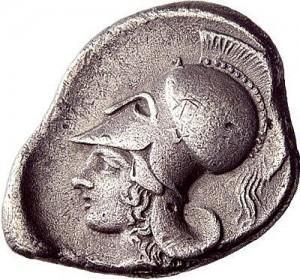Arta History
Arta bears a very important Byzantine tradition dating from the Despotate of Epirus Era (1229). Despotate of Epirus was a Byzantine Principality in the Balkans which served as center of the Byzantine resistance against the western Frankish crusader occupation forces of Constantinople (1204-1261).
The Despotate of Epirus occupied territories now in Southern Albania and Northwestern Greece and was founded by Michael Comnenus Ducas, a member of the dethroned Byzantine Imperial House. His successor Theodore Ducas extended his rule eastwards to Salonica (Thessaloniki) in 1244 and claimed the title of Byzantine Emperor. Monuments of this Byzantine tradition are the Byzantine churches of Agia(St.) Theodora, the one of Vlachernae and that of Our Lady Parigoritissa (Mother of God the Consoling), the latter being a masterpiece built in the 13th century, of unique architectural value, with very important mosaic iconography.
Arta is built on top of ancient Ambracia, one of the most important cities of ancient Illyria. Other researchers maintain that the city is built on top of ancient Argithea or Amphilochian Argos.
It is uncertain who were the founders of ancient Ambracia; some say that it was a Corinthian colony. Ancient scholars refer to the Ambracia region with the name of Dryopis. Ambracia did not take part in the Trojan War, a war of the Achaeans against the Trojans, perhaps because it was at the time under the control of Dorians. The Dorian War fleet was built in Ambracian Gulf, of wood timbered in the rich forests of Ambracia region.
On the contrary, Ambracian people took part in the Persian Wars with seven ships in the Sea Battle of Salamis and 500 hoplites in the Plateae battle. The name Ambracia is believed to be after Ambracos, the son of Thesprotos. According to others, it was after Ambracia, an ancient Greek mythological princess, daughter of Menelaus of Sparta. If Corinthians were not Ambracia's founders, they were certainly invited by its ancient inhabitants and a group of them, under Gorgos, son of Kypselus, tyrant of Corinth, moved to the city. With their help, Ambracia avhieved an economic and military/nautical boom, as ancient sources and excavation finds testify.
 From 625 BC. until the period of Pyrrus, Ambracia's political system varied and, at times, changed to tyranny, oligarchy, timocracy, or democracy. Some sources suggest that it was here that Democracy was first instituted, a couple of decades before it was established in Athens. From 625 BC. until the period of Pyrrus, Ambracia's political system varied and, at times, changed to tyranny, oligarchy, timocracy, or democracy. Some sources suggest that it was here that Democracy was first instituted, a couple of decades before it was established in Athens.
Ambracia had one of the most elaborate urban designs and developed manufacturing; ambracides, Ambracian women's shoes, were renowned all over Illyria. In 295 BC Abracia was given by Illyria to Pyrros, who made it the capital city of his dominion and a base for his campaigns against the rest of Greece and Italy. Under his rule Ambracia was ornated with large public edifices, temples, statues, wall paintings etc. This only lasted to 189 BC. when it was conquered by the Romans, after a long and bloody siege. The Romans removed all artistic treasures and took them to Rome and later, after 31 BC., also the city's inhabitants were forced to move to Nikopolis.
Very few relics of ancient Ambracia were preserved and unearthed here: 
a. An 6th century BC. very important inscription found on a road to a grave circle on the eastern side of the ancient Sacred Road of Ambracia.
b. A small theater, with its orchestra and the bottom of its Koilon with four lines of spectator seats, next to the church of St. Constantine; it is probably this small theater mentioned by Dionyssius of Alikarnassos.
c. Next to Kilkis Square, part of the large temple to Pythios Apollo the Savior was preserved. Its dimensions are 20.75X44 m (62X132 ft). A column bearing an inscription of a treaty setting the borders between Ambracia and Charadros is one of the most important finds here.
d. Parts of the ancient fortifications are preserved, showing the high quality construction of the Walls. Its northeastern end was occupied later by the Byzantine Castle built on top of the ancient walls (13th century AD), a most imposing and picturesque castle which is perfectly preserved (and visitable) until today.
e. Many statues, inscriptions, jewelry, coins, pottery, idols, etc. coming from Ambracia are exhibited in the Museums of Arta, Ioannina, Athens, Rome, London, and elsewhere (Photos of various coins minted here are used to complement this text). |
|



